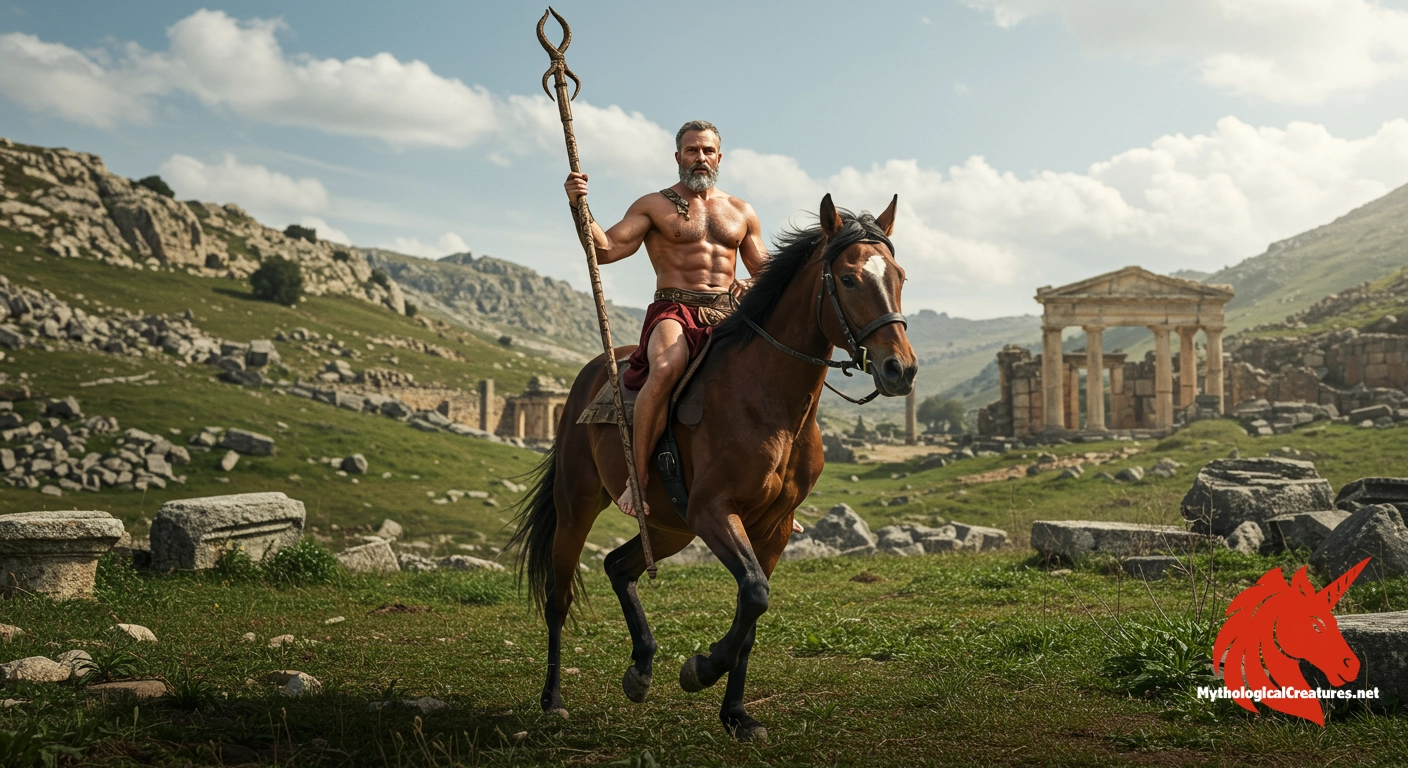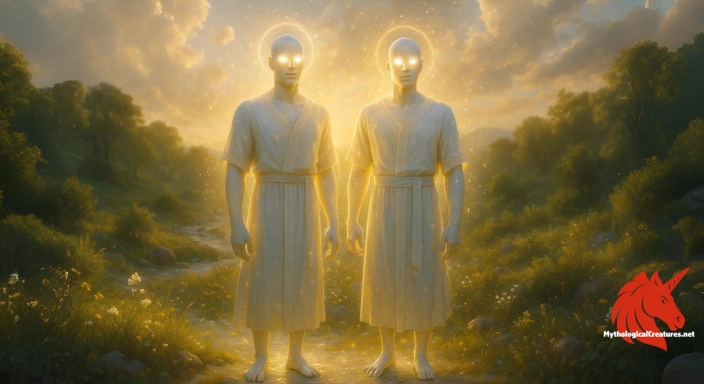Sabazios: Sabazios is an ancient deity from Asia Minor revered as a sky father and horseman in Phrygian and Thracian traditions.

Sabazios
Sabazios - A major deity whose cult influenced multiple cultures across Asia Minor, Thrace, Greece, and Rome
Origins & First Encounters
Sabazios emerges as a captivating deity whose origins trace back to Asia Minor, embodying the synthesis of Phrygian and Thracian spiritual traditions. He is celebrated as a sky father and the archetypal horseman, a striking figure who commands both the celestial and the terrestrial realms. His earliest attestations are found in ancient inscriptions and iconographic depictions that underscore his martial vigour and divine authority. The deity’s presence in early Anatolian worship demonstrates a complex interweaving of local mythologies with broader Indo-European influences. He was revered not only as a powerful war-like figure but also as a symbol of natural and agricultural cycles, illustrating his multifaceted role. In cultural contexts across Asia Minor and the Balkans, Sabazios served as a conduit between the lofty skies and the earthly domain. His representation on horseback, brandishing a characteristic staff of power, underscores the dynamism and fluidity of his myth. The evolving narratives around his persona reflect an amalgamation of indigenous traditions and later Hellenic interpretations. Ultimately, Sabazios remains a vivid emblem of ancient religious syncretism, drawing renewed interest among modern enthusiasts of mythology.
Source Texts & Tale Variants
The literary and archaeological record offers a diverse array of sources that shed light on the lore of Sabazios. Inscriptions and carved reliefs from regions spanning Asia Minor to the Balkans provide tangible evidence of his cult and religious significance. Diverse texts, though fragmentary, recount elaborate rituals and festive celebrations dedicated to his worship. Multiple story variants have been recorded, some emphasising his role as a celestial warrior while others highlight his association with agricultural prosperity and the cycles of nature. References in ancient Roman interpretative practices reveal a continuous adaptation of his mythos in new cultural contexts. The multiplicity of sources reflects a contest of interpretations, where local traditions intermingled with Hellenistic and Roman religious reforms. Stories of his divine interventions and heroic feats were transmitted orally and through visual art, each account contributing layers to his mythic identity. Even as scholarly debates persist regarding his exact origins, the enduring presence of his cult demonstrates its widespread resonance. These rich, albeit varied, sources collectively illustrate the dynamic evolution of his narrative in the ancient world.
Form & Powers
Depictions of Sabazios are marked by a powerful and dynamic visual narrative that emphasises his role as a celestial horseman. He is consistently portrayed astride a vigorous steed, an image that underscores his dominion over both the skies and the earthly plane. His figure is often rendered in robust detail, with a commanding presence that speaks to his martial prowess and divine strength. Iconographic elements such as a distinctive staff serve as symbols of his authority, reinforcing his status as a sky father. Facial features in artworks often combine stern determination with wisdom, reflecting a dual nature of power and insight. His attire and accoutrements display subtle Eastern influences, including distinctive headgear and ornamental motifs typical of Anatolian design. The dynamic posture and fluid lines captured by ancient artists enhance the impression of movement, as if he is perpetually in the act of riding towards a divine destiny. Variations in his depiction sometimes highlight different aspects of his character, from a more combative appearance in battle to serene regality in ceremonial portrayals. Through these detailed representations, Sabazios is immortalised as a figure of both formidable strength and transcendent authority.
Regional Faces
Regional interpretations of Sabazios reflect the wide-ranging cultural landscapes in which his deity was worshipped. In his native Asia Minor, he was primarily revered as a potent sky god whose influence permeated the natural and man-made worlds. Thracian adaptations infused his myth with an element of fierce, untamed energy, emphasising his role as a god of both war and harvest. Within the Central Balkans, the deity’s iconography blended with local traditions to produce a hybrid form that resonated deeply with indigenous spiritual practices. Localised festivities and ritual practices often highlighted his equestrian symbolism, adapting it to particular regional customs and seasonal cycles. While the core attributes of Sabazios remained recognisable, artistic depictions varied, with some emphasising martial aspects and others celebrating his fertilising powers. This regional diversity underscores the adaptability of his cult, which absorbed and reinterpreted influences from neighbouring cultures. The fluid boundaries between ethnic and cultural identities in these regions ensured his myth evolved uniquely in different locales. Such regional nuances not only enriched his storied past but also helped cement his enduring presence in the ancient religious landscape.
Cultural Parallels
Sabazios’s character offers intriguing parallels to several other mythological figures across ancient cultures. His skyward dominion and paternal attributes invite comparisons with Greek deities such as Zeus, who similarly presided over the heavens. The association with Dionysus in certain interpretations adds another layer of complexity, merging the divine qualities of exuberance and transcendence. In the context of Indo-European myth, his equestrian imagery resonates with heroic deities celebrated for their martial and chthonic energies. Similarities can also be drawn with Eastern deities whose iconography fuses elements of celestial governance and agrarian prosperity. Comparative analysis reveals that these shared symbols often serve to bridge the divine with the natural world, highlighting common themes of power and regeneration. The blending of martial and mystical qualities in his myth mirrors other syncretic figures that evolved as societies adapted traditional beliefs to meet new cultural challenges. Furthermore, his dynamic representation on horseback creates an image that spans the realms of both the heroic and the divine. Such cross-cultural connections underscore not only shared mythological archetypes but also the universal human quest to personify the forces of nature and authority.
Legacy & Modern Evolution
The legacy of Sabazios has evolved considerably over the course of history, shaped by shifting cultural and religious paradigms. In the ancient world, he was venerated as a symbol of both celestial oversight and earthly vitality, his image adapting across diverse societies. Over time, his iconography was absorbed into varied religious practices, reflecting periods of both syncretism and reinterpretation. During the Roman era, his cult expanded, allowing him to be associated with dominant gods like Zeus and Dionysus, thereby reinforcing his multifaceted identity. In later periods, elements of his myth found echoes in emerging esoteric and neopagan movements, where his equestrian imagery and skyward dominion were celebrated anew. Modern artists and writers continue to draw inspiration from his dynamic representations, finding in his story a timeless exploration of power and transformation. Contemporary reinterpretations often cast him as a bridge between the ancient and the modern, symbolising the eternal human fascination with the divine. The enduring resonance of his myth in various cultural expressions attests to the lasting impact of his legacy. Today, Sabazios stands as a testament to the transformative power of myth, continuously inspiring new generations with his layered and compelling narrative.
Interesting Fact
Sabazios is one of the few deities whose iconography transcends cultural boundaries, being consistently depicted as a horseman with a staff across diverse traditions.
Quick Creature Info
Features:
Associations:
Our Mythic Legendary Rating:

Also Sometimes Known As:
Habitat:
Supernatural Powers:
Physical Attributes:
Abilities:
Behavior:
Lore:
References
Discover Another Mythical Legend You May Not Have Heard Of?
Uncover the mysteries of ancient folklore and expand your knowledge of legendary beings from cultures around the world.
Dare to Meet the Urfeil and Marfeil....
Mythical Disclaimer: The images and data on this site are derived from various historical and literary sources, but we have found that many myths often have multiple versions and interpretations across references, sometimes contradictory. As a result, these creature depictions are artistic interpretations—imaginative blends of folklore, legend, and a dash of AI guesswork. Because creature descriptions vary widely, our illustrations and accompanying information represent our best effort to honor mythology while bridging creative gaps. Enjoy these interpretations—just remember, we've done our best to respect the stories and validate available data, but in the realm of mythology, details often shift, imagination leads the way, and nothing is ever set in stone!
Curated by the Mythological Creatures Team (rev. May 2025)
